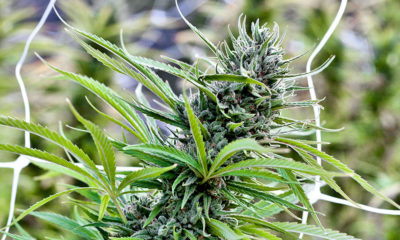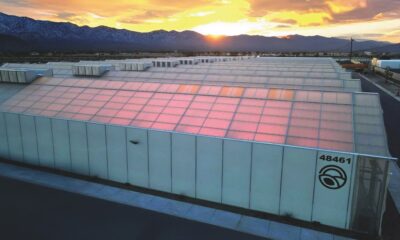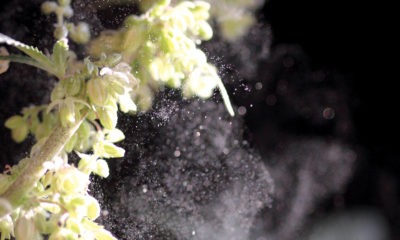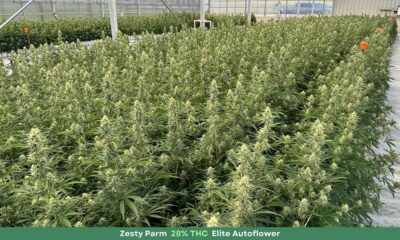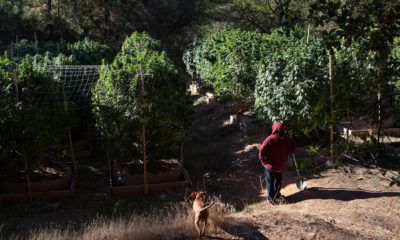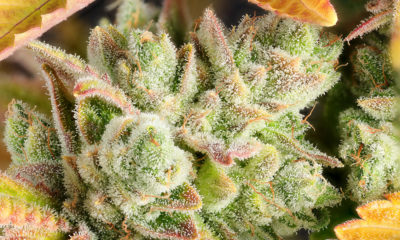
Grow
California Cannabis Farmers Adapt to Drought Conditions
With a drought draining reservoirs and rivers across California, farmers across the state are finding it necessary to adapt to the harsher growing conditions.
While California’s state laws have not yet placed any water restrictions on cannabis growers, many small cannabis farmers have recently begun taking extra strides to operate sustainably on their own accord.
“The drought is creating an urgency for something we knew we were doing anyways,” said Hezekiah Allen, executive director of the Emerald Growers Association, an organization that represents about 150 cannabis farms in California. “Now, our members are storing more water, they’re making sure to be more efficient with their water and we’re really seeing some adaptations on farming techniques.”
Allen said he has seen farmers increasingly adopt water conservation practices such as installing water storage tanks on their property and building ponds to catch rainfall since the drought began intensifying over the past year.
Because cannabis requires only a relatively small amount of water — it only takes about 150 gallons of water to grow a pound of weed compared to over 100 gallons of water for an ounce of beef — enough rain can fall into a pond or be captured in a water storage tank in one year to water a whole crop, said Allen.
Danielle Burkhart, the assistant executive director for California Cannabis Voice Humboldt, shared that cannabis farmers are also finding it easier to install storage tanks and ponds in recent years thanks to loosened drug enforcement. She also has experience growing.
“Previously, farmers had to stick to guerilla-style growing strategies to avoid detection and they couldn’t have water tanks or farm near ponds, because it was a large signal to law enforcement,” said Burkhart. “But now people are looking at impending legalization and becoming compliant with new programs, so there’s a lot more incentives to spend more on infrastructure because you’re not as worried that someone’s going to take it away from you.”
In more surreptitious measures, Burkhart said the drought has pushed cannabis farmers to increasingly innovate permaculture and swale technology to maximize water use, as well as move drip irrigation closer to the root to conserve water. Other conservation techniques on the rise on cannabis farms include using mulch and cover cropping to trap and retain water and solar pumping rivers to filter out pesticide chemicals that become more concentrated as water dwindles.
Over the past year, California Cannabis Voice Humboldt has been educating cannabis farmers in Humboldt County on those water conservation measures, said Richard Marks, the organization’s executive director, and they’ve seen success already. The California Water Board recently found that 75 percent of the cannabis farms in the area were compliant or going through the process of becoming compliant with state conservation rules, according to Marks.
Humboldt County grows enough cannabis for an estimated $4 billion in revenue per year, said Marks, and is the largest grow area in California “by quite a bit.” His organization is pushing for Humboldt County Board of Supervisors to adopt legislature on grow practices and land use issues which would effect a significant portion of California’s cannabis farmers.
On the statewide level, Allen and the Emerald Growers Association are also trying to create government incentive programs to encourage more cannabis farmers to enact the best water conservation practices. They are currently lobbying for programs that would allow cannabis farmers compliant with environmental regulations to finally receive access to local farmer’s markets, grants, low-cost loans and the University of California’s pest management resource center. The state currently allows farmers of agricultural crops access to those incentives, but it doesn’t consider cannabis an agricultural crop.
“It can be hard to transfer to a regulated market and the more we can get people excited for regulation is really important,” said Allen. “Instead of focusing on the criminality, we can start to treat unregulated farmers like community members capable of working together to solve this crisis.”
One piece of legislation currently in the State Assembly dubbed the Watershed Protection Act would create some of those incentives. Assembly Bill 243 from Assemblyperson Jim Wood would expand funding Gov. Jerry Brown gave to the water board last year to hire new staff and create a cannabis compliance program dealing with the watershed. The bill would make the pilot water board program state-wide and permanently funded, as well as outline the “best management practices” many small cannabis farmers have already adopted to conserve water.
The state’s concern with the watershed stems from some environmental damage done by trespassing cannabis farmers across the state — farmers that Allen and Burkhart assert have a very different attitude toward the environment.
“In my experience, the growers who are invested in the community are concerned with proper stewardship for the environment,” said Burkhart. “The trespass growers who are just interested in the money who come and leave, they aren’t really paying attention to the environment.”
Those trespass farmers have often been lambasted for environmental crimes, such as diverting salmon spawning creeks or poisoning animals with pesticides. While the drought has undoubtedly wreaked havoc on the state’s environment, Allen said one positive from the drought is that he believes less people are coming to California to grow cannabis on federal land.
“From 2008 to 2012, we were seeing people moving here from all over the country,” said Allen. “I think that has slowed down a lot with the drought.”
However, Allen doesn’t think the drought has gotten bad enough to push farmers out of the state.
Another potential benefit of the drought, Burkhart said, is the increased experimentation with dry farming techniques, which can often yield a higher THC content.
Do you use environmentally-friendly cultivation techniques? Share your tips with us in the comments.



